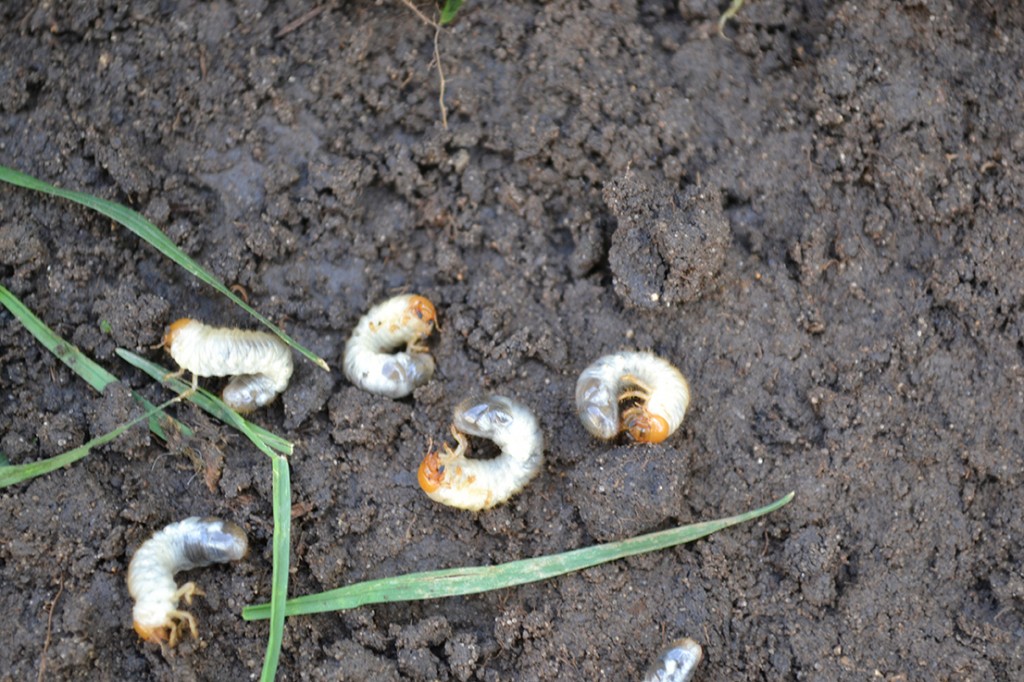White grubs are beetle larvae produced by Japanese Beetles. White grubs are about one inch long with three pairs of legs that grow near the head of the insect. White grubs are root feeders that destroy turf by cutting off the turf grasses ability to take up water and nutrients. Now even more than ever, it is important to treat your lawn for these pests. Since we are experiencing drought conditions, the lack of moisture in the soil is already stressing the grass. If white grubs attack your lawn by cutting off the food and water supply of your turf during a drought, the devastation is multiplied.
From white grubs to Japanese beetles.
Lucky for us Japanese Beetles only have one generation per year. Beginning in mid June, you probably started noticing shiny, bright green bug invading your lawn. Most adult beetles are at their peak activity level in the full afternoon sun. The life cycle of these pests is pretty simple. In June female beetles burrow several inches into the soil to lay their eggs. After several weeks the eggs hatch and the grubs begin to feed on the roots of the turf grass. By August the beetles are fully grown after feeding on your lawn for the past couple of months. As fall rolls around and the first frost appears, grubs begin their descent into your soil. Grubs usually live in the first few inches of your soil, but some may reach depths as low as a foot and a half. Grubs become inactive when soil temperatures are below 50 degrees F. After this point they remain inactive in your turf until spring. When spring temperatures reach above 50 degrees F the grubs become active again, returning to the root zone of your grass to begin feeding. After about four weeks, grubs stop feeding and start the transformation into adult Japanese Beetles.

